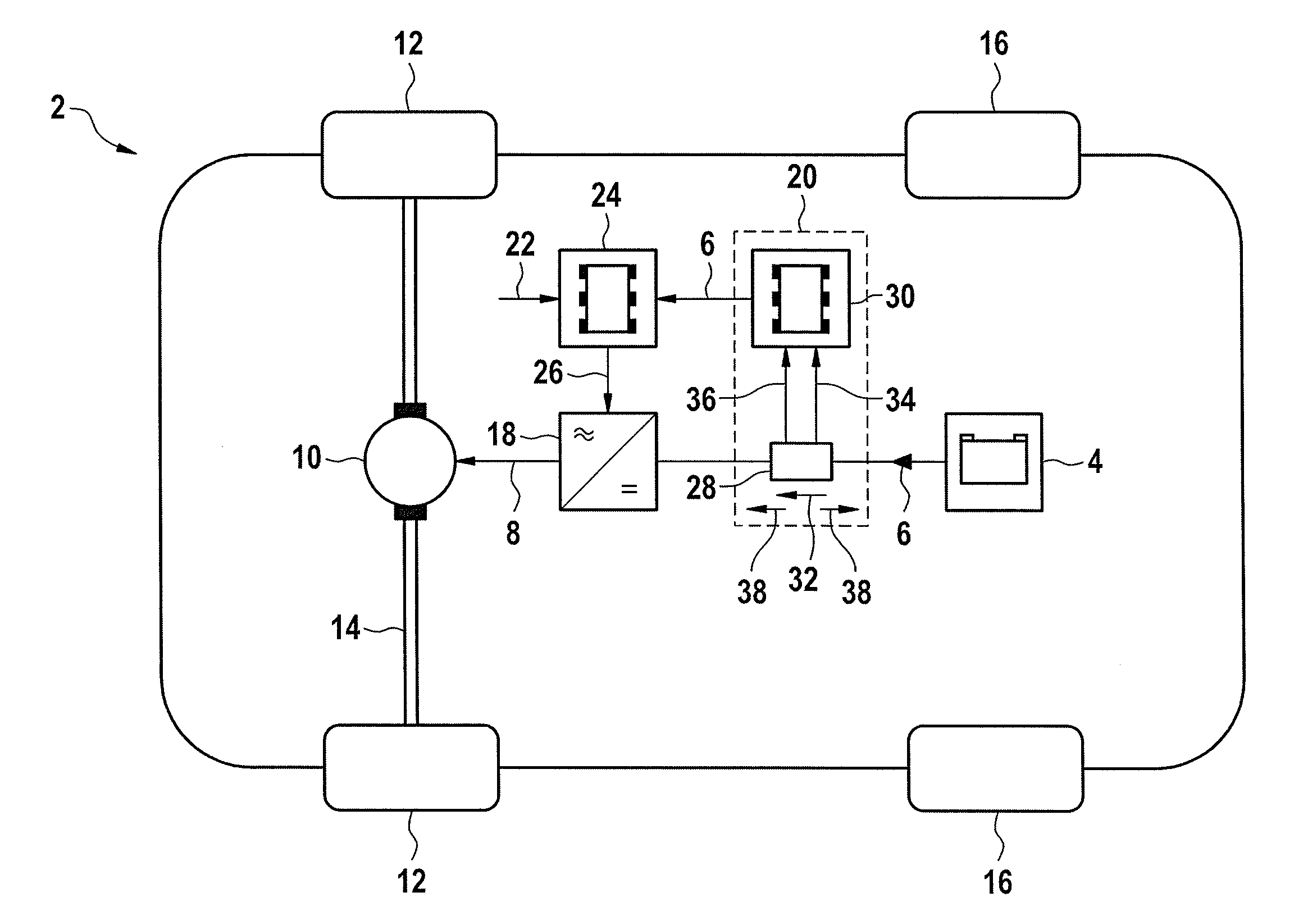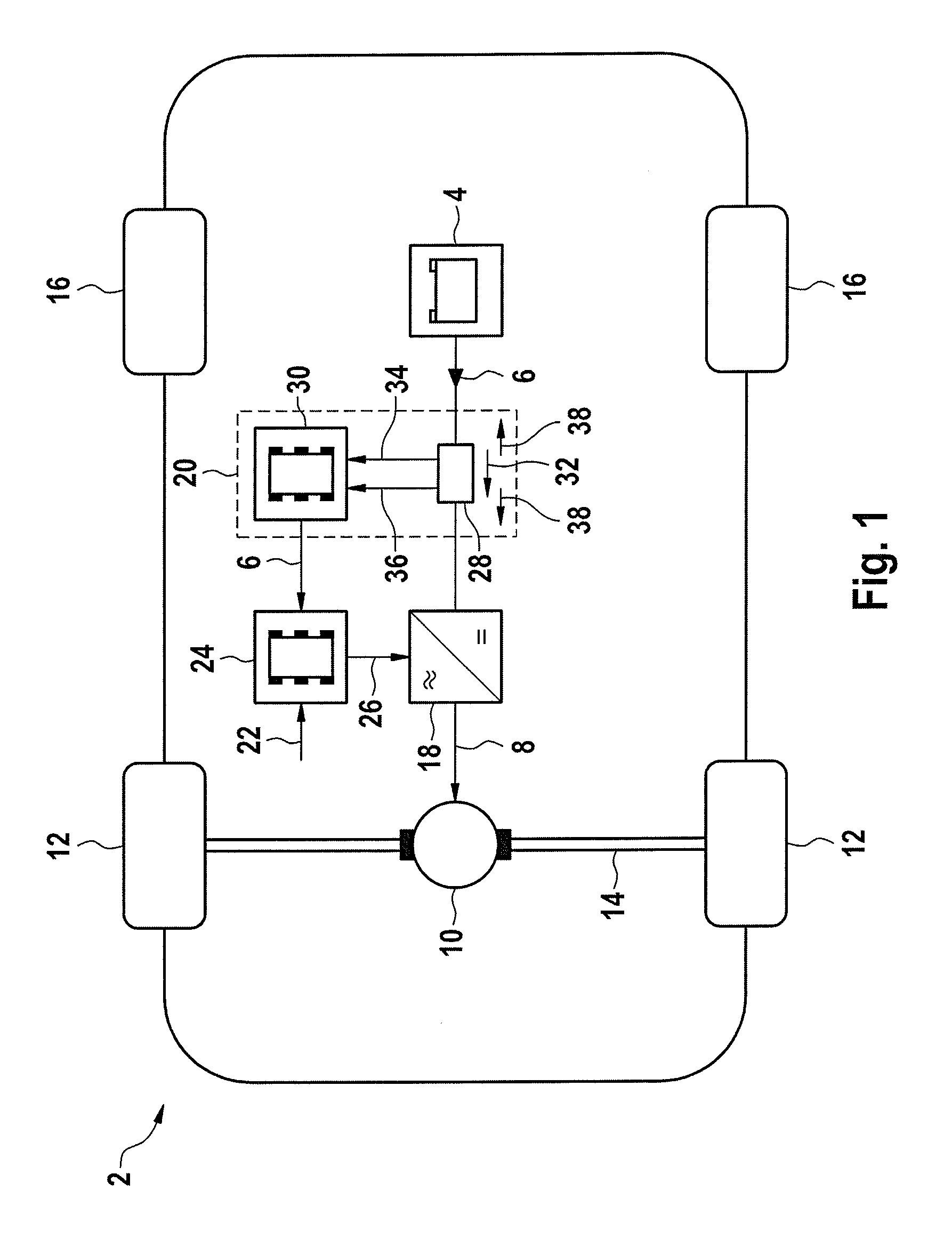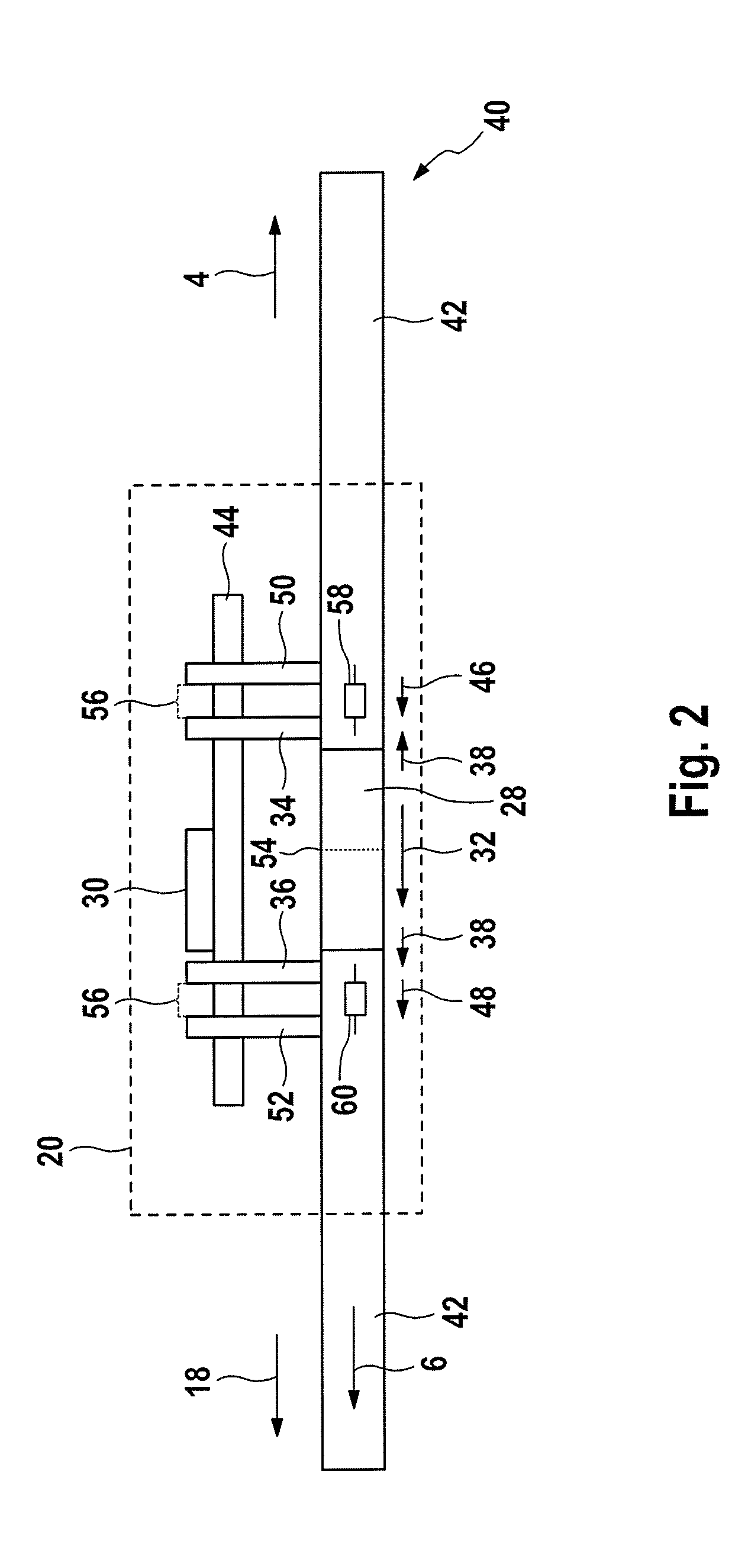Shunt current measurement with temperature compensation
- Summary
- Abstract
- Description
- Claims
- Application Information
AI Technical Summary
Benefits of technology
Problems solved by technology
Method used
Image
Examples
Embodiment Construction
[0036]In the figures, the same technical elements are represented by the same numbers, and are described only once.
[0037]With reference to FIG. 1, a schematic representation is shown of a vehicle 2 with a vehicle battery 4, which delivers an electric current 6.
[0038]The electric current 6 supplies the various electrical consuming devices in the vehicle 2 with electrical energy 8.
[0039]One example of such electrical consuming devices is an electric motor 10, which uses electrical energy 8 to drive the front wheels 12 of the vehicle 2 via a drive shaft 14. The rear wheels 16 of the vehicle 2 are therefore free wheels. Electric motors 10 of this type used for the propulsion of a vehicle 2 are generally configured as alternating current motors, whereas the electric current 6 delivered by the vehicle battery 4 is a direct current. In this case, the electric current 6 must firstly be converted into an alternating current by means of a converter 18.
[0040]Vehicles, as in the case of the veh...
PUM
 Login to View More
Login to View More Abstract
Description
Claims
Application Information
 Login to View More
Login to View More - Generate Ideas
- Intellectual Property
- Life Sciences
- Materials
- Tech Scout
- Unparalleled Data Quality
- Higher Quality Content
- 60% Fewer Hallucinations
Browse by: Latest US Patents, China's latest patents, Technical Efficacy Thesaurus, Application Domain, Technology Topic, Popular Technical Reports.
© 2025 PatSnap. All rights reserved.Legal|Privacy policy|Modern Slavery Act Transparency Statement|Sitemap|About US| Contact US: help@patsnap.com



